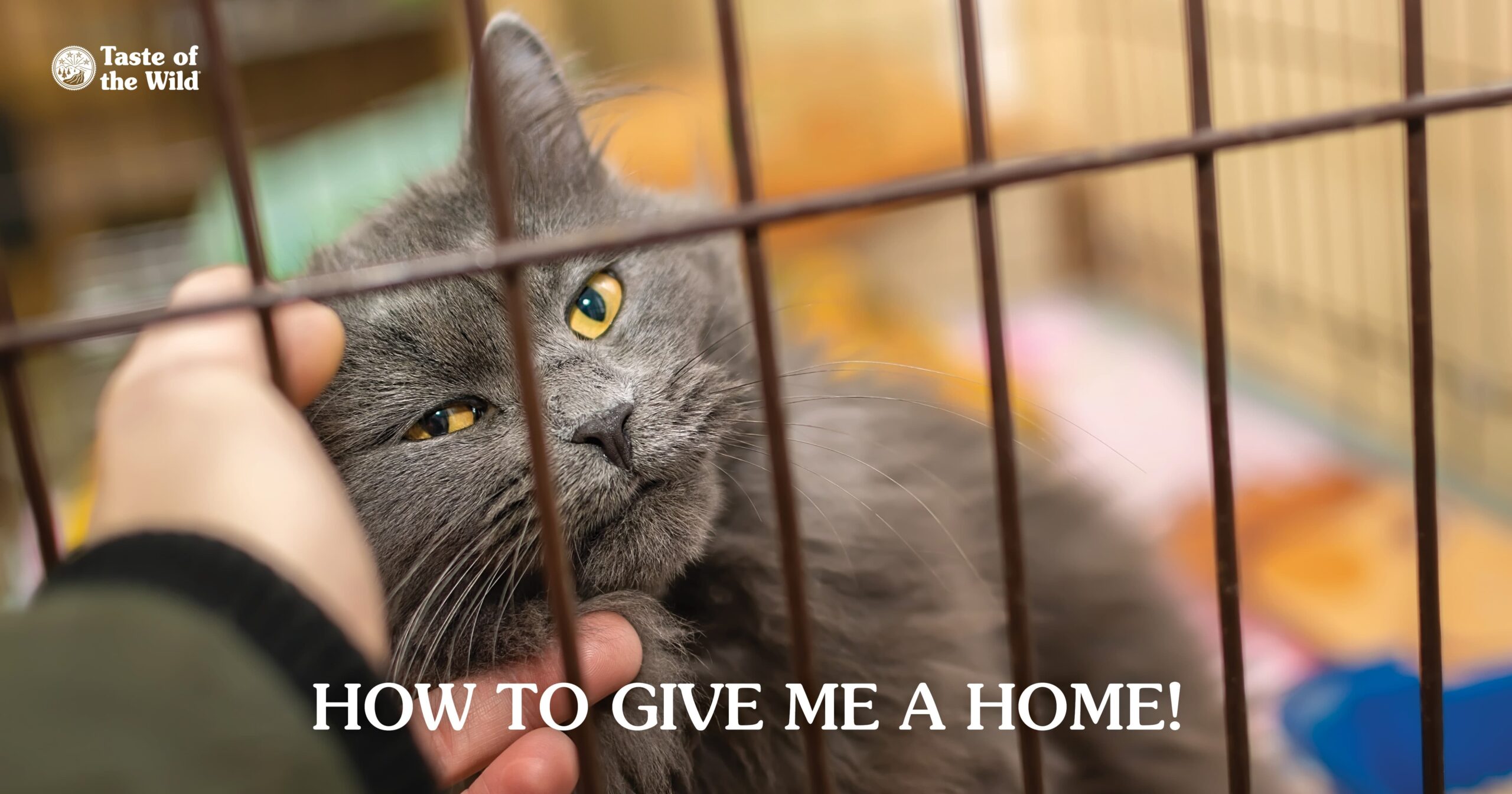Can an Outdoor Cat Ever Become an Indoor Cat?
Thursday, July 30, 2020 | Adoption

Is a stray cat trying to adopt you? Does it appear at your doorstep day after day? Does it press against your ankles and gaze at you adoringly? If so, it’s possible that it could be happy living the rest of its life inside your home. Especially if the cat has been socialized, perhaps by a previous owner, and it’s comfortable around people.
Feral cats, on the other hand, have always lived in the wild, have never been socialized and may never be comfortable living in close proximity to humans. If this particular cat appears to be more friendly than scared, it may be possible for them to trade in the outdoor life for an indoor one.
The outdoor life comes with risks
Why keep cats indoors? The average lifespan for an indoor cat is 10 to 12 years longer than that of an outdoor cat, according to the American Humane Society. That’s because roaming cats can be hit by cars, attacked by predators, or exposed to deadly diseases or other potentially life-threatening dangers.
The first step: a veterinary exam
If you can tempt the cat into a carrier with some tasty tuna, the next stop is the local veterinary clinic. Your veterinarian can scan for a microchip to make sure the cat is, in fact, a stray and not a neighbor’s cat freeloading food and affection.
If there’s no microchip, it’s important for everyone’s safety to have the cat examined before introducing it to any family members, including your furry ones. The doctor can check for diseases, such as feline leukemia virus and feline immunodeficiency virus, which could be spread to current household cats.
At the same time, the veterinarian will evaluate the cat’s health and treat any internal and external parasites, so you’re not welcoming ear mites, fleas or roundworms into your home, too. Spaying or neutering the cat can help reduce roaming and decrease the incidence of marking within your home. Now’s the time to administer vaccines and implant a microchip, just in case the cat inadvertently slips out the door.
Catproof the house
If you haven’t already done so for other housecats, make sure your house is safe for your new cat. Remove any plants that may be toxic, put away string, thread and other small objects that may be swallowed, cover electrical cords that could be chewed and make sure windows and screens are secure.
Create a cat haven
Help your new cat become gradually acclimated to its new surroundings by limiting it to a bedroom for a week or two. This can help the cat become adjusted to using a litter box. Start with unscented, clumpable litter, and scoop the box daily. For now, avoid boxes with covers and self-cleaning mechanisms. Food and water bowls should be placed as far away from the litter box as possible.
To help create a cat haven, provide with creature comforts including a soft bed and a kennel or box to hide in. Pheromone sprays or diffusers can help ease anxiety and promote calm.
You’ll also want to provide opportunities for hunting and adventure, similar to what they had in the outdoors. A cat tree, placed near a window, can satisfy the cat’s need to climb, stretch and get a bird’s-eye view of, well, the birds outside. Treats that are hidden around the room can simulate the hunting experience. And a scratching post, sprinkled with a little catnip, can provide a better alternative for sharpening nails than your furniture.
Spend plenty of one-on-one time with your new cat, so he or she can get used to your company and to being touched or handled. Encourage play and exercise with feather dancers and other toys.
Introduce other pets gradually
After your new cat adjusts to being inside, allow the cat and other pets to sniff each other under the door. You can also rub a towel on one pet and place it in the room with the new cat (and vice versa) so they can learn each other’s scents.
After a week or so, open the bedroom door and allow the new cat to explore the rest of the house when other pets aren’t around. Gradually introduce the pets during supervised sessions, and allow the new cat to retreat to its own room when needed.
With a little patience, you can help a stray cat transition to indoor living so it can feel the kindness and love that comes with being part of your family.
The information in this blog has been developed with our veterinarian and is designed to help educate pet parents. If you have questions or concerns about your pet’s health or nutrition, please talk with your veterinarian.




